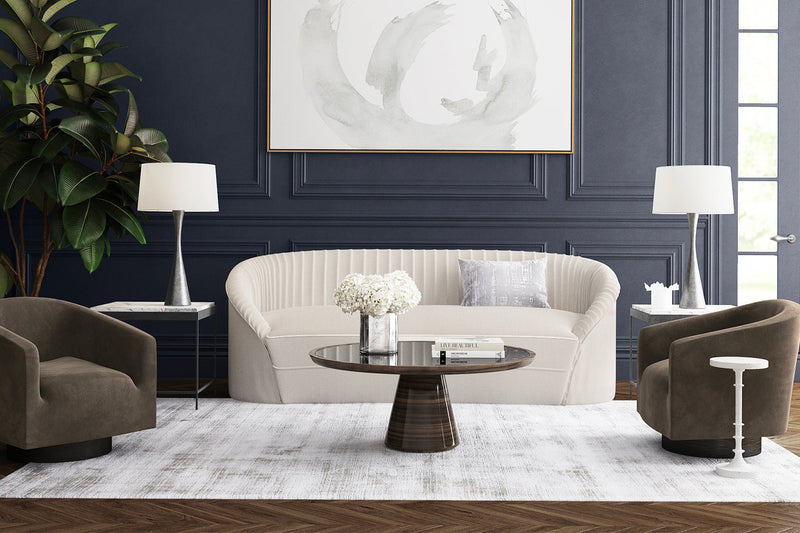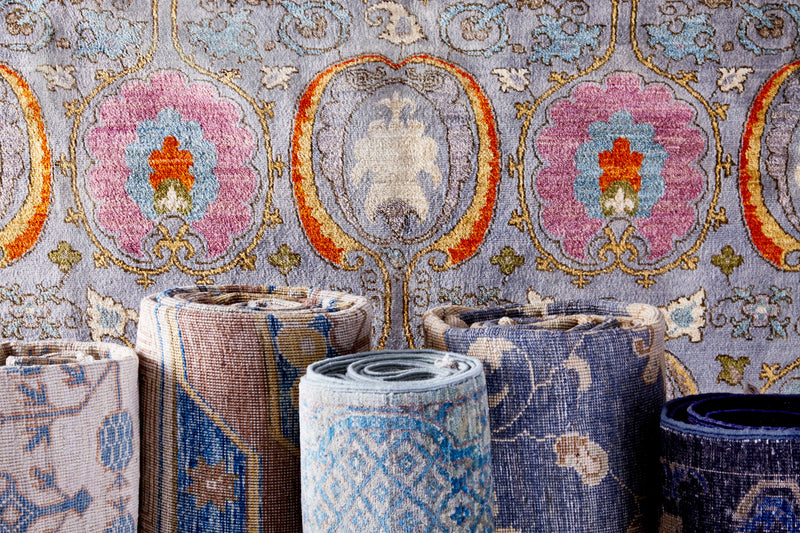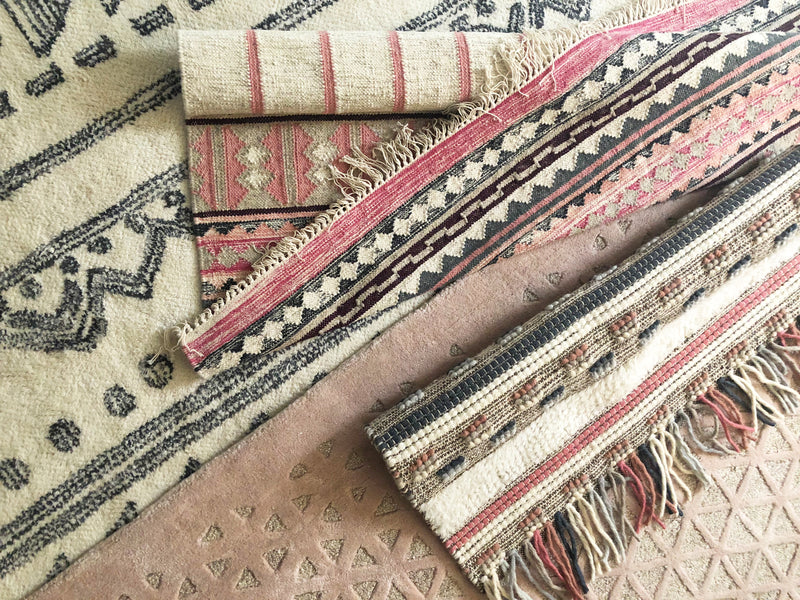We’ve compiled a list of the rug terms so you can better understand what we’re talking about and learn more about your product choices.
Acrylic: Man-made fiber with wool-like appearance. Does not dye as well as nylon and is less durable.
Antique Wash: A chemical or natural process that tones down colors and to simulate aging.
Art Silk: Short for artificial silk, it is usually mercerized cotton, rayon or polyester that appears to be silk.
Backing: In tufted carpet, this is the woven backing into which tufts are inserted by needles. Tufts are bonded into place with latex applied on the reverse side.
Cut-pile: A style of carpet that is sheared, exposing the ends of the carpet fiber. Cut piles come in different lengths and thicknesses.
Dhurrie: A cotton flatwoven rug from India.
Faux Silk: “Artificial silk” is usually a synthetic, such as polyester, or cellulosic fiber such as viscose/rayon. Mercerized cotton is also used as a silk look-alike. Also called art silk, faux silk is usually used as small accents or in a short, dense pile construction.
Flatweave: Woven on a loom and are without pile or knots. Examples include kilims, pit looms, and dhurries.
Flattening: Most carpet styles and textures can show some effect from pile flattening or a change in pile lay due to frequent walking or other forms of traffic.
Hand: Tactile qualities of a fabric including softness, stiffness, rough, scratchy, etc.
Hand Woven: Those rugs woven either on the hand, or hand and foot power-loom.
Knot: The basic structural unit of the pile rug, knots vary according to local and tribal weaving traditions, with the two main types being symmetrical (Turkish) and asymmetrical (Persian)
Knot Count: the number of knots per square inch or per square decimetre. Usually, (but not always!) more knots means better quality and higher price.
Latex: Used on the back of rug as a glue. It’s synthetic or natural rubber obtained by polymerization and used especially in coatings.
Loom: Frame or machine used for interlacing two or more sets of threads or yarns to form a rug or other textile. A loom is essentially a large frame that holds the warp strands tight so the weft strands can be passed under and over. Depending on the weave, artisans work using either a floor, vertical or pit-loom.
Luster: Brightness or sheen of fibers, yarns.
Machine-made: Created by power looms electronically automated and controlled by computers, these carpets can be finished more rapidly than their handmade counterparts, but do not have the same artisanal quality
Medallion: Large design found in the center in some oriental rugs.
Monsoon: Monsoon season is a strong seasonal wind and heavy rain lasting from May to September in India, it can slow down rug production as many of the processes, such as drying and finishing, are done outdoors.
Nylon: Durable synthetic fiber that also has good dyeing characteristics.
Patina: The surface appearance of a rug usually mellows with age or use.
Pile: The surface of the area rug, generally made of wool, formed by the cut ends of the knots. The length of the pile is usually evened off in two shearing operations, one during weaving and one on completion of the area rug.
Polypropylene/Olefin: Synthetic fiber used extensively in machine-made rugs. A stain-resistant fiber which makes it ideal for outdoor rugs. They have good abrasion resistance, but tend to flatten quickly.
Power-loom: A loom operated by mechanical or electronic power.
Rug Pad: Designed to be used under rugs on both hard surfaces and carpets. It will also reduce wear and tear, help absorb impact, and make vacuuming easier.
Runner: A long, narrow rug used mostly for hallways and staircases. Usually under three feet wide.
Sisal: Derived from the leaves of the ‘agave sislana’ cactus plant. Sisal has a distinctively coarse texture and is stronger and more durable than other natural fibers.
Soumak: This is a flat weave style where the yarn is wrapped around the warp to create a ‘knitted’ appearance.
Sprouts: When ends of backing material such as jute appear on the pile surface.
Tracking: The effect of imprints on your carpet left by feet. It is more common on cut-pile than loop pile surfaces but it is temporary and will disappear after vacuuming.
Tufted: An area rug crafted by hand as, an artisan injects a “u” shaped loop of yard onto a tufting gun and through canvas backing to form the pile,
Warp: Parallel yarns running the length of the rug that creates the initial structure which is then interlaced with horizontal wefts.
Washing: A chemical solution used after weaving to soften a rug's colors and increase its luster.
Weft: The yarns woven horizontally through the warps.



